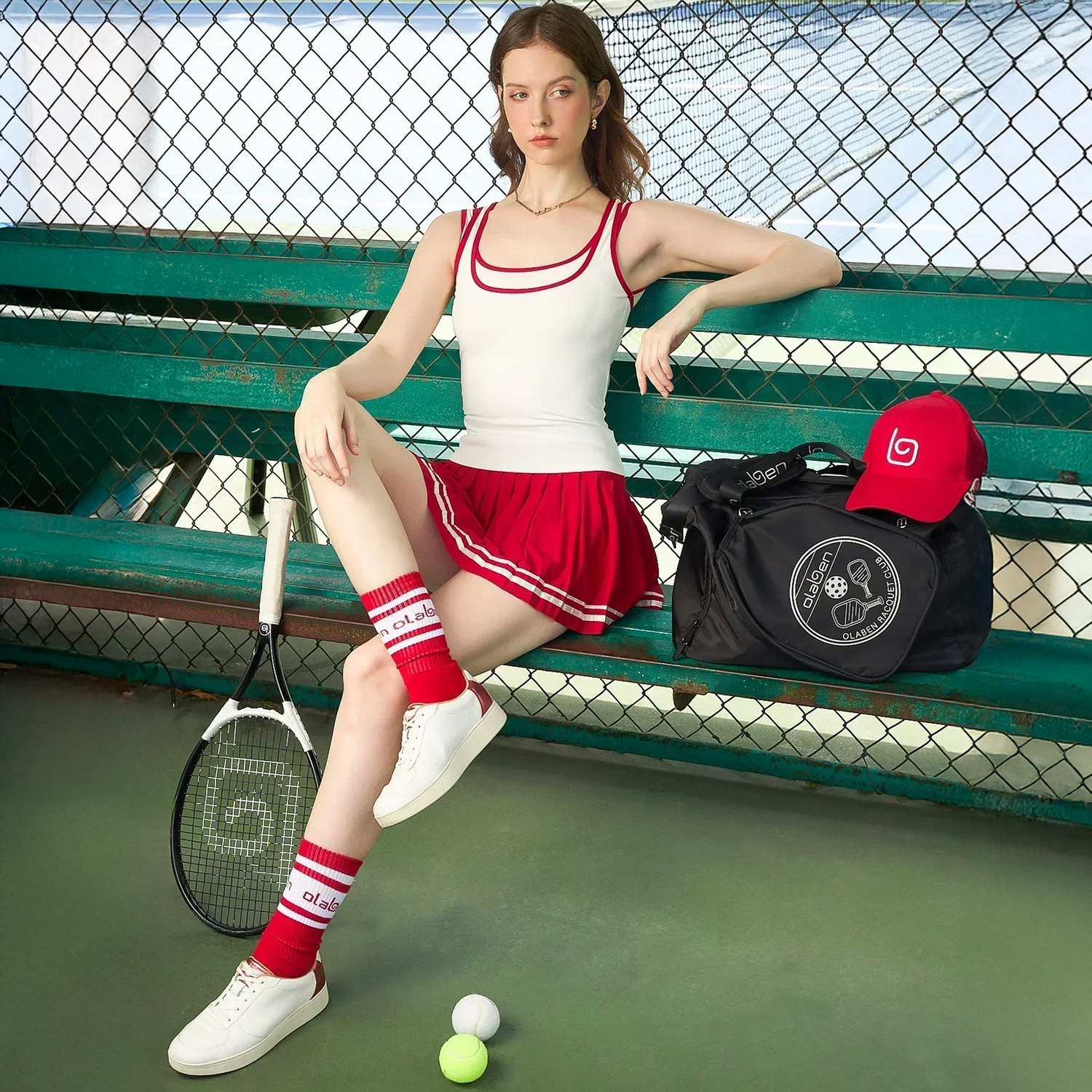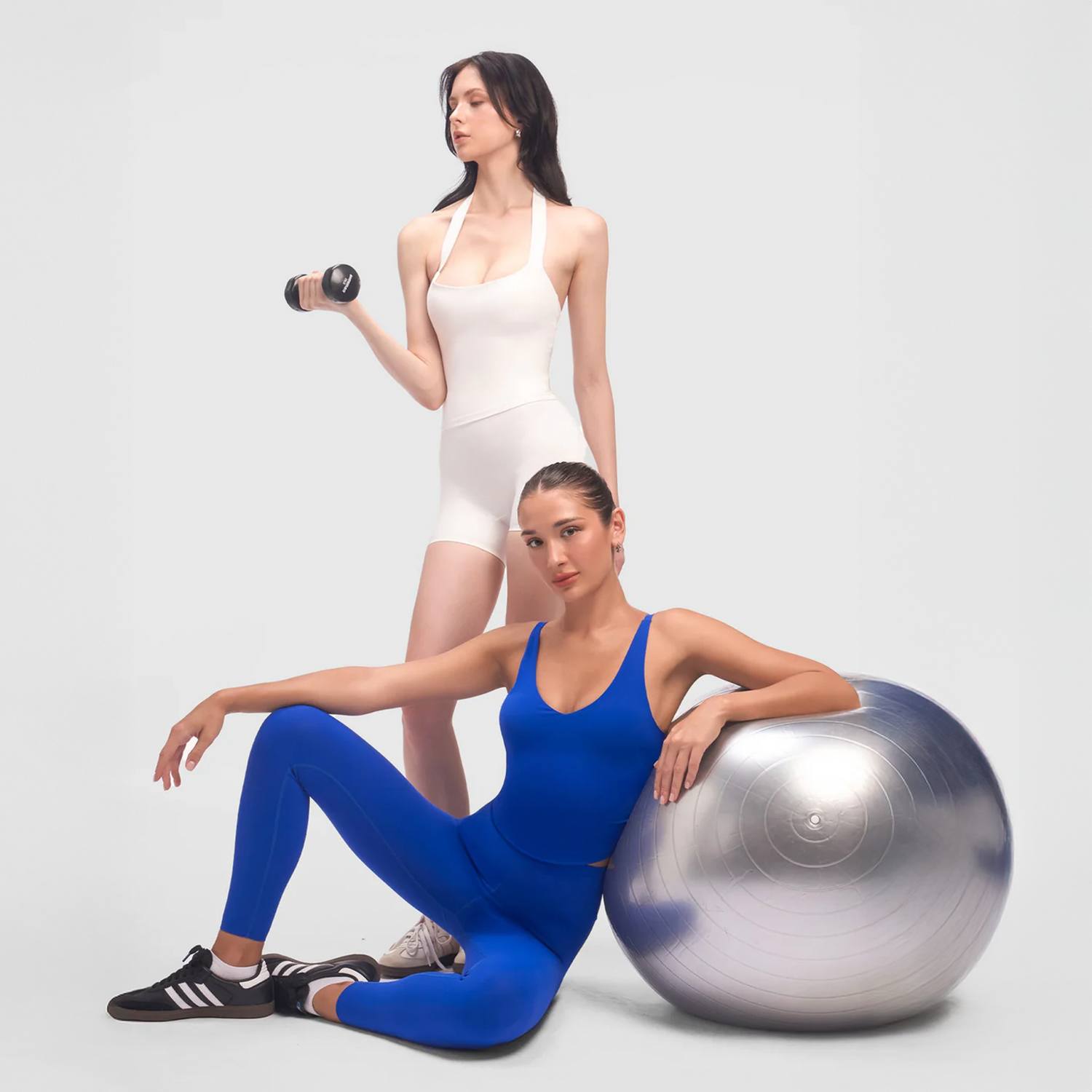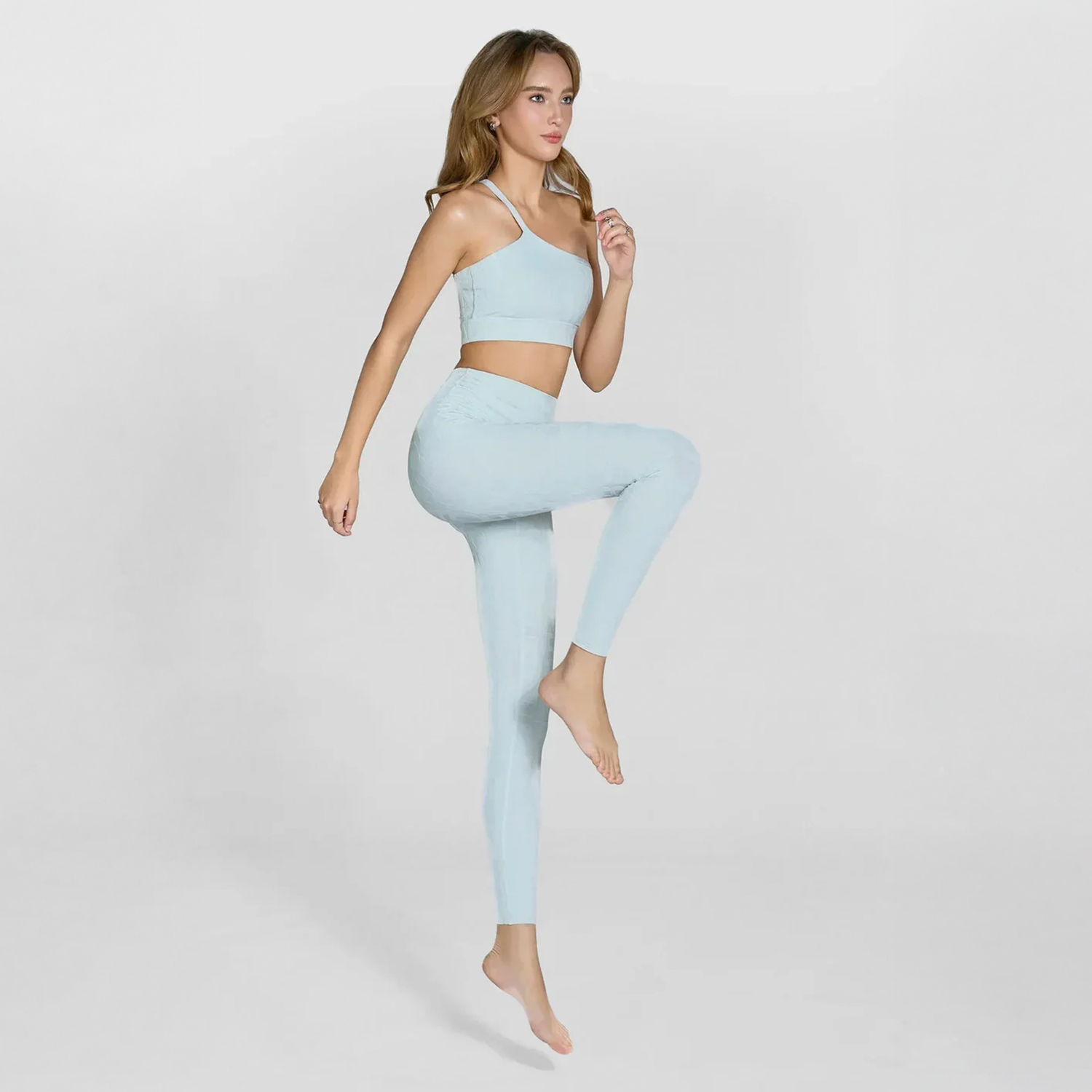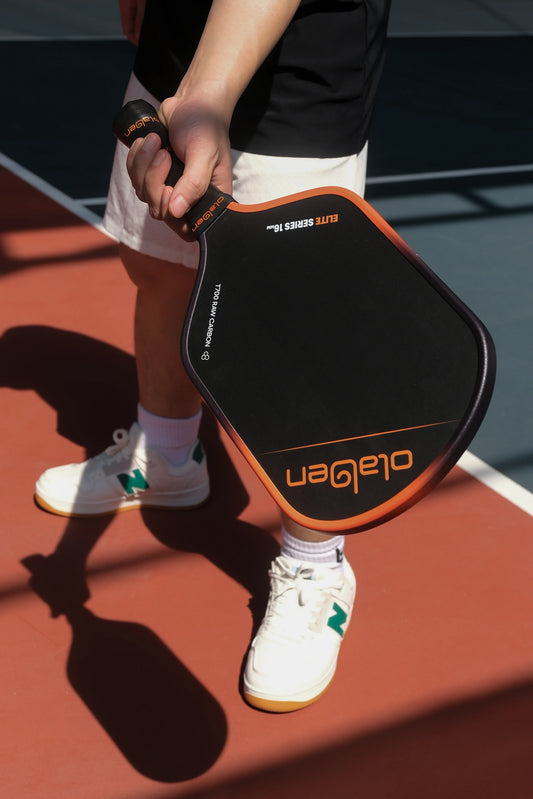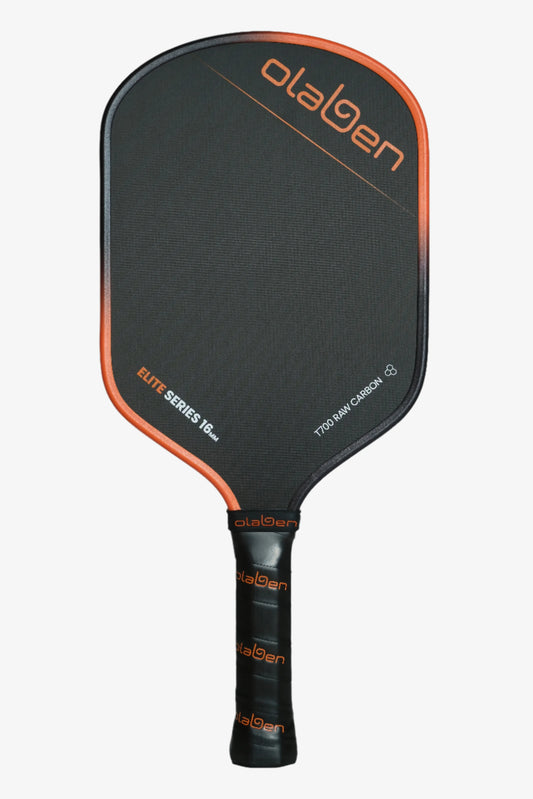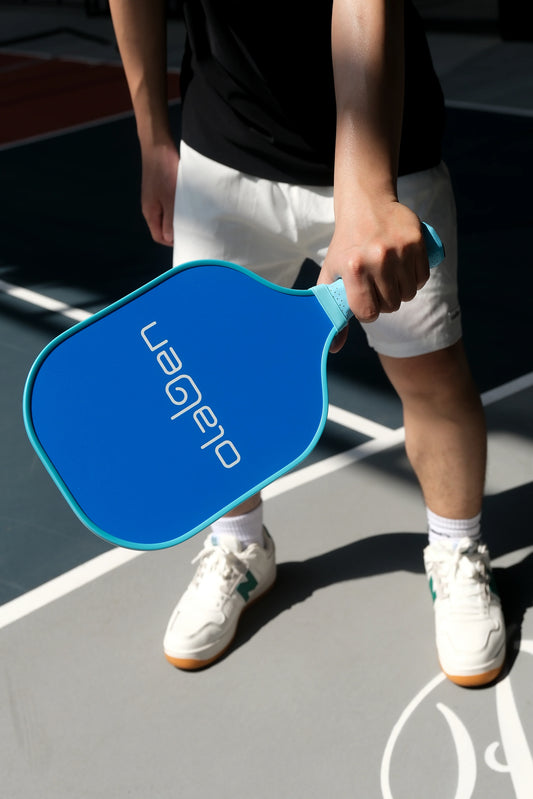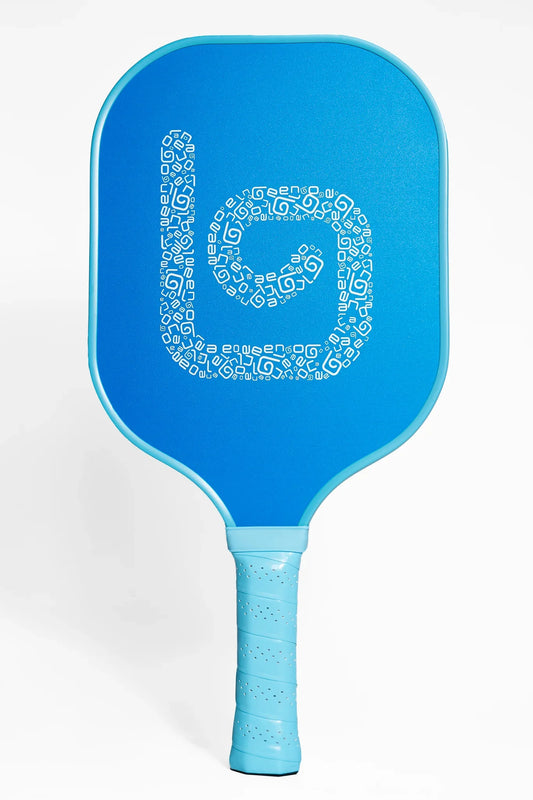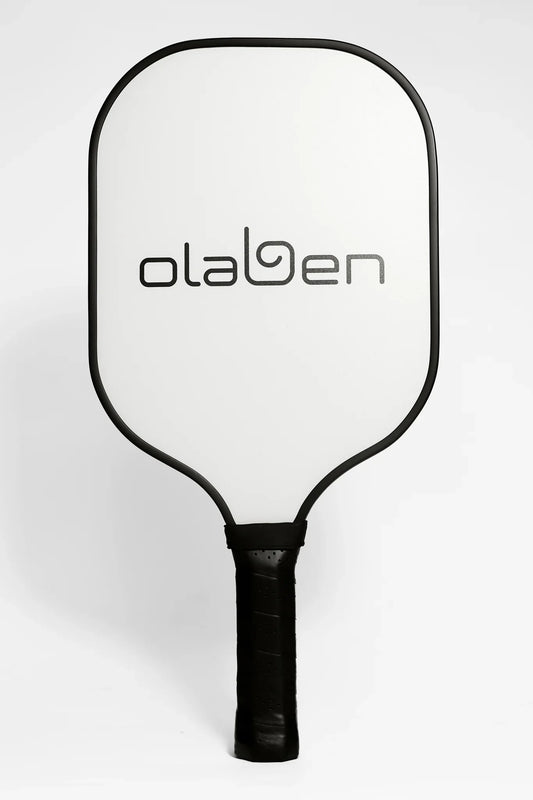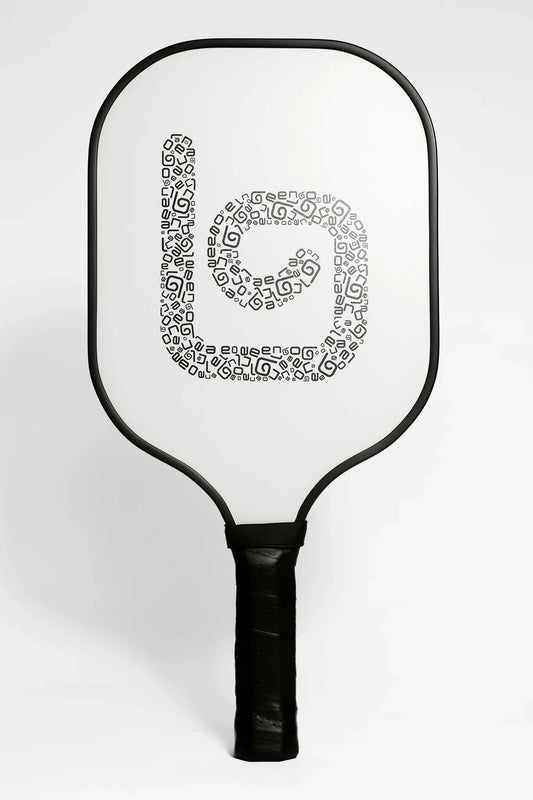Mastering your pickleball paddle grip is one of the most essential steps to improving your overall game. The right grip helps you control the ball, maintain consistent power, and prevent wrist strain. Many beginners focus on paddle selection or stroke technique but overlook the importance of how they hold the paddle, a critical factor for balance and precision.
In this comprehensive pickleball paddle grip guide, let’s explore with Olaben the most common Pickleball grip styles, how to choose the best one for your playstyle, and practical tips to elevate your performance from your very first games.
1. Why the Right Pickleball Paddle Grip Matters?
Just like in tennis or badminton, your grip in Pickleball determines your shot’s direction, spin, and power. An incorrect grip can cause mis-hits, reduce control, and increase wrist fatigue all of which affect consistency and comfort on the court.
By following a proper pickleball paddle grip technique, players can easily adjust paddle angles, transition smoothly between forehand and backhand shots, and use wrist motion efficiently for improved precision. A good grip also helps conserve energy and maintain consistent performance throughout a match.
If you’re new to Pickleball, take time to learn how your thumb and index finger rest on the handle. This foundation is essential for long-term skill development and reducing the risk of injury.

The Best Starting Point: The Continental Grip
There are many grips in pickleball, but one stands out as the best starting point: the Continental Grip. Most teaching pros recommend it and many players already hold the paddle this way without realizing it.
If you have ever shaken someone’s hand, you already know how to do it.
Here is the easiest way to learn the Continental Grip:
- Hold your paddle out in front of you like someone is offering their hand for a handshake.
- Reach out with your palm.
- Wrap your fingers naturally around the handle.
- Look at the “V” shape between your thumb and index finger. It should point toward you, not in any sideways direction.
This position gives you a powerful, centered starting point. With it, you can hit both forehand and backhand without constantly flipping the paddle face. The more you use it, the more comfortable it becomes.
Beginners can stay on this grip alone for a while and see great progress.
Continental Grip Variations: Neutral, Strong, and Weak
Once you are comfortable with the basic Continental Grip, you can make subtle changes that create new shot opportunities. These variations involve rotating your hand slightly around the handle.
These small adjustments can completely change your capability.

Neutral Grip
- The “V” points directly at your nose or chest
- Balanced for most strokes
- Best for groundstrokes and soft shots like dinks
This is where you want to live most of the time.
Strong Grip
- Rotate your hand slightly to the right if you are right handed
- Boosts wrist snap and power
- Ideal for overhead smashes and aggressive forehands
Your paddle, wrist, and forearm line up in a straight plane with this grip. That alignment helps convert motion into pure power. Try a few overhead swings and you will immediately feel the difference.
Weak Grip
- Rotate your hand slightly to the left
- Opens the paddle face
- Useful sometimes for slices and soft angle shots
- Very limited for power and overheads
This version is niche. Most beginners do not need it until later.
Pro tip: With enough practice, switching between these variations becomes instinctive. You will not think about it during play. Your hand will simply move to the grip that the moment requires.
How Tight Should You Hold the Paddle?
A common beginner habit is gripping too tightly because it feels safer. The problem is that a tense grip leads to tense arms. That slows reaction time and tires your hand quickly.
Think of your grip pressure like a scale from 1 to 10:
- A relaxed 3 to 5 is perfect
- Squeeze tighter only when smashing or blocking a fast ball
- Loosen up right after contact
A comfortable grip gives you better touch and quick hands.
Where to Hold the Paddle During Play
Once the grip is correct, the next question is where to position the paddle. You want to be ready for any ball that comes your way.

Neutral Ready Position
This is your default posture when waiting for the ball:
- Paddle in front of your chest about a forearm’s distance
- Elbows slightly away from your body
- Knees soft and weight on the balls of your feet
- Eyes forward and alert
From here, you can react faster to anything hit at you.
At the Net
The pace gets much quicker near the kitchen line. Keep the paddle higher than you might expect. Think nose height rather than waist height. This gives you first reaction advantage.
- Paddle slightly tilted forward
- Strong or neutral grip recommended
- Be ready to block or punch volleys instead of swinging hard
Do not back away from fast balls. Meet them early and absorb the impact.
At the Baseline
You have more time to react so the paddle can sit slightly lower. Just do not let it dangle or rest near your hip. The lower and farther the paddle is from your center, the slower your hands become.
A simple rule: Paddle should always stay in your field of view.
Common Pickleball Paddle Grip Mistakes (and How to Fix Them)
Even the most detailed pickleball paddle grip guide can’t help if you repeat small grip mistakes. Here are six common ones to avoid:
| Mistake | Consequence | Fix |
|---|---|---|
| Holding too tightly | Wrist fatigue | Relax grip during play |
| Wrong grip for shot type | Mis-hits | Adjust grip between strokes |
| Hand too high/low on handle | Loss of power | Keep hand centered |
| Not switching grips | Slow reaction | Practice quick wrist rotation |
| Grip too loose | Weak contact | Strengthen grip slightly |
| Stiff wrist | Reduced spin | Loosen wrist for smooth motion |
Smart Drills to Build Better Grip Habits
You do not need long sessions. Short and focused drills will help you lock the right grip into muscle memory.
Try these:
- Shadow swings in front of a mirror
- Dink rallies using only Neutral Grip
- Smash drills to feel the Strong Grip work
- Quick volley blocks with paddle held high
- Bounce the ball on your paddle face without adjusting your grip
Five minutes a day is enough to build consistency.
Confidence Grows From Comfort
As your hands learn where to go and how firmly to hold, everything about your game becomes easier.
- Smooth swings
- Better ball feel
- Less effort to generate speed
- More patience and control at the net
- Faster reaction under pressure
Many players reach a point where the paddle starts to feel like an extension of their arm instead of a separate object. That is when real improvement begins.

Pick the Right Paddle to Support Your Grip
Once you master how to hold a pickleball paddle, the next upgrade is choosing a paddle that matches your hand comfort. Paddles with balanced weight and a comfortable grip design help you maintain precision through long rallies. If you want a paddle that feels steady in your hand and gives you confidence in your grip, take a look at the pickleball paddle options from Olaben. The right paddle allows all your new skills to shine.
Final Thoughts: Master Your Pickleball Paddle Grip
Your pickleball paddle grip determines how you connect with the ball influencing spin, control, and comfort. For beginners, start with the Eastern Forehand Grip and progress to Continental or Semi-Western Grips as your confidence grows.
For the best experience, practice with a premium Pickleball paddle from Olaben, designed for perfect balance and grip comfort. With the right paddle and grip, every swing becomes smoother, stronger, and more precise.

